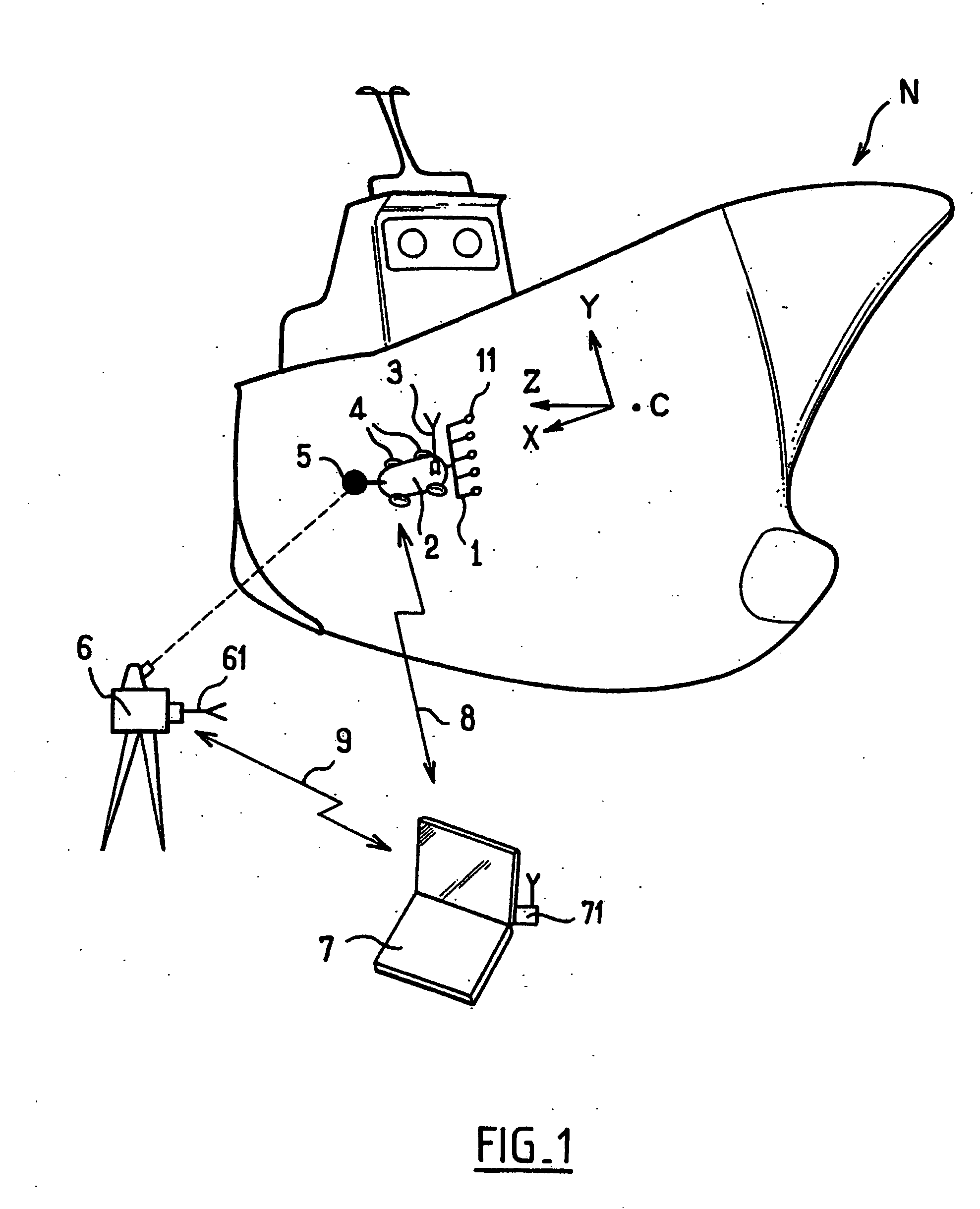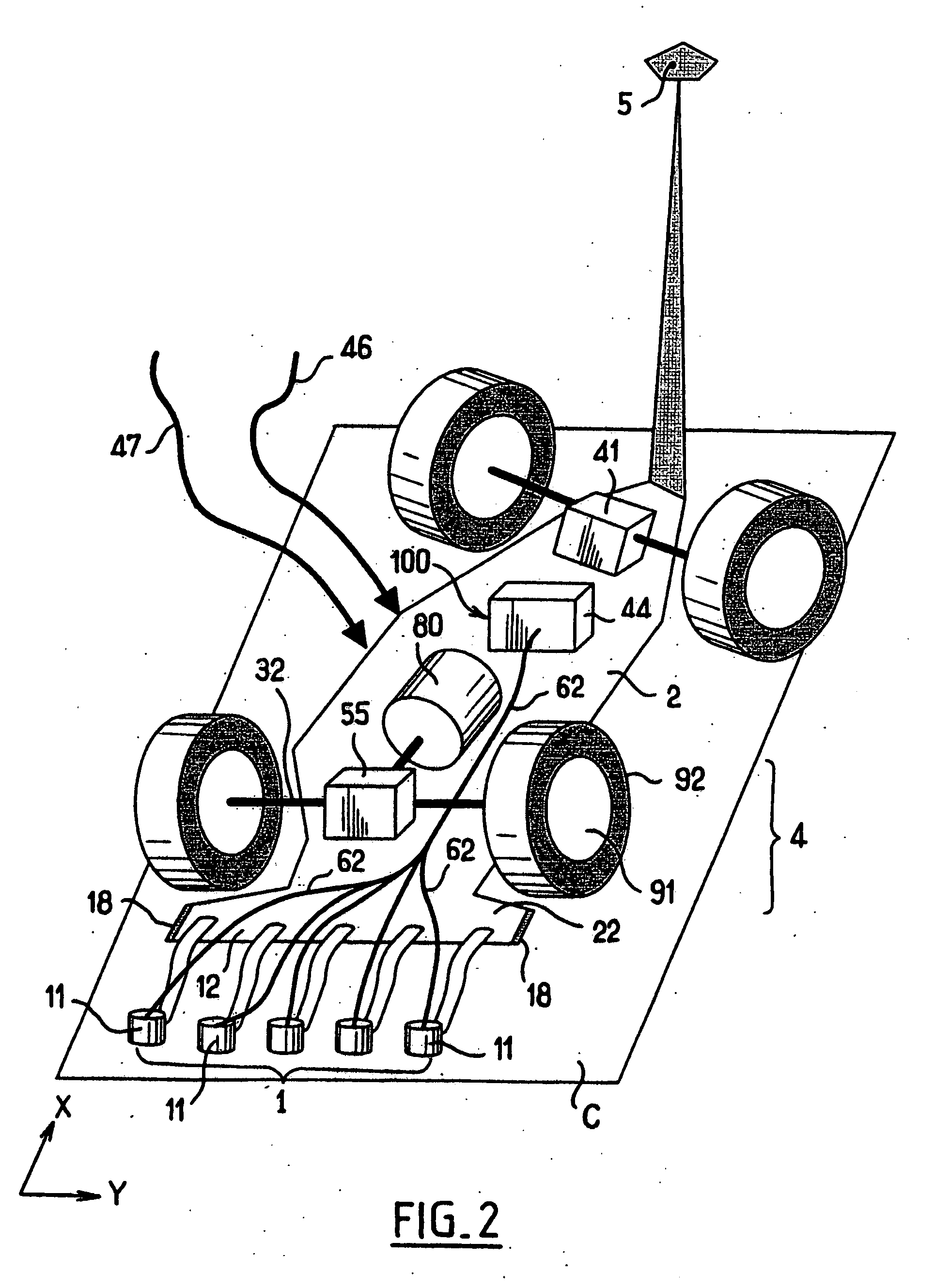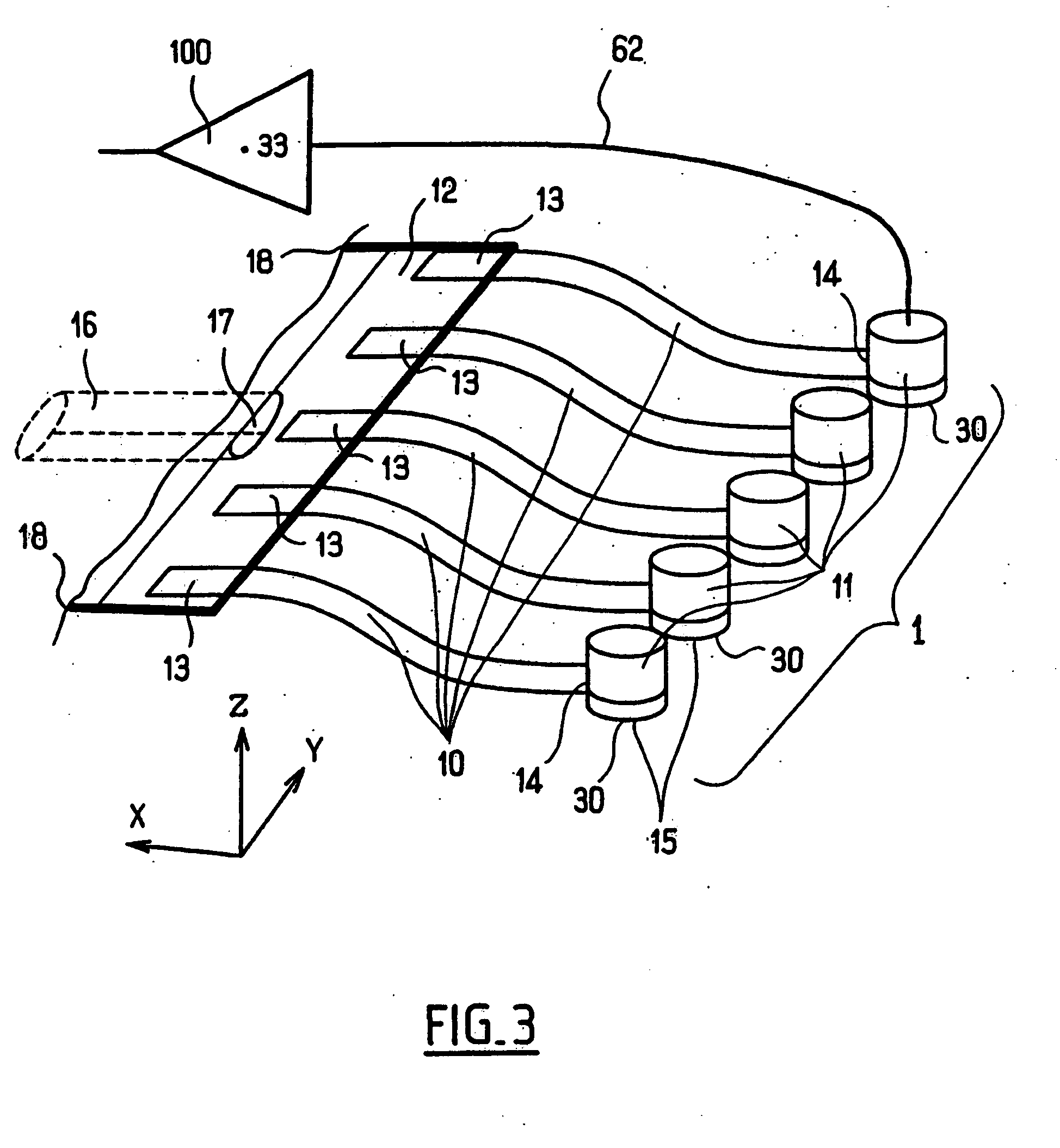Tool, Sensor, and Device for a Wall Non-Distructive Control
a non-distructive control and wall technology, applied in the direction of material solid analysis using sonic/ultrasonic/infrasonic waves, measurement devices, etc., can solve the problems of unsuitable and current techniques for thoroughly scanning areas of several tens to several thousands of square meters, unfavorable, and inability to move the probe several million times
- Summary
- Abstract
- Description
- Claims
- Application Information
AI Technical Summary
Benefits of technology
Problems solved by technology
Method used
Image
Examples
Embodiment Construction
[0046]A method of taking measurements that is performed by using a non-destructive inspection apparatus of the invention is described below and shown in the figures for the example of the steel hull of a ship.
[0047]In FIG. 1, the apparatus comprises a measurement unit or inspection tool 1 comprising a plurality of measurement sensors 11 that is moved, e.g., towed, by a robot 2 rolling on the hull C of the ship N in a lengthwise direction X and a widthwise direction Y, adhering to the hull by means of magnetized wheels 4, the direction Z oriented upwards relative to the hull C being perpendicular to the directions X and Y. By way of example, the sensors 11 are sensors for measuring local thickness, using interface circuits and an onboard computer 44, as described below with reference to FIG. 8, to generate thickness data that is referred to below as measurement data.
[0048]The robot 2 and / or the inspection tool 1 include a measurement data transmitter or transmission means 3 for trans...
PUM
| Property | Measurement | Unit |
|---|---|---|
| distance | aaaaa | aaaaa |
| degree of freedom | aaaaa | aaaaa |
| width | aaaaa | aaaaa |
Abstract
Description
Claims
Application Information
 Login to View More
Login to View More - R&D
- Intellectual Property
- Life Sciences
- Materials
- Tech Scout
- Unparalleled Data Quality
- Higher Quality Content
- 60% Fewer Hallucinations
Browse by: Latest US Patents, China's latest patents, Technical Efficacy Thesaurus, Application Domain, Technology Topic, Popular Technical Reports.
© 2025 PatSnap. All rights reserved.Legal|Privacy policy|Modern Slavery Act Transparency Statement|Sitemap|About US| Contact US: help@patsnap.com



